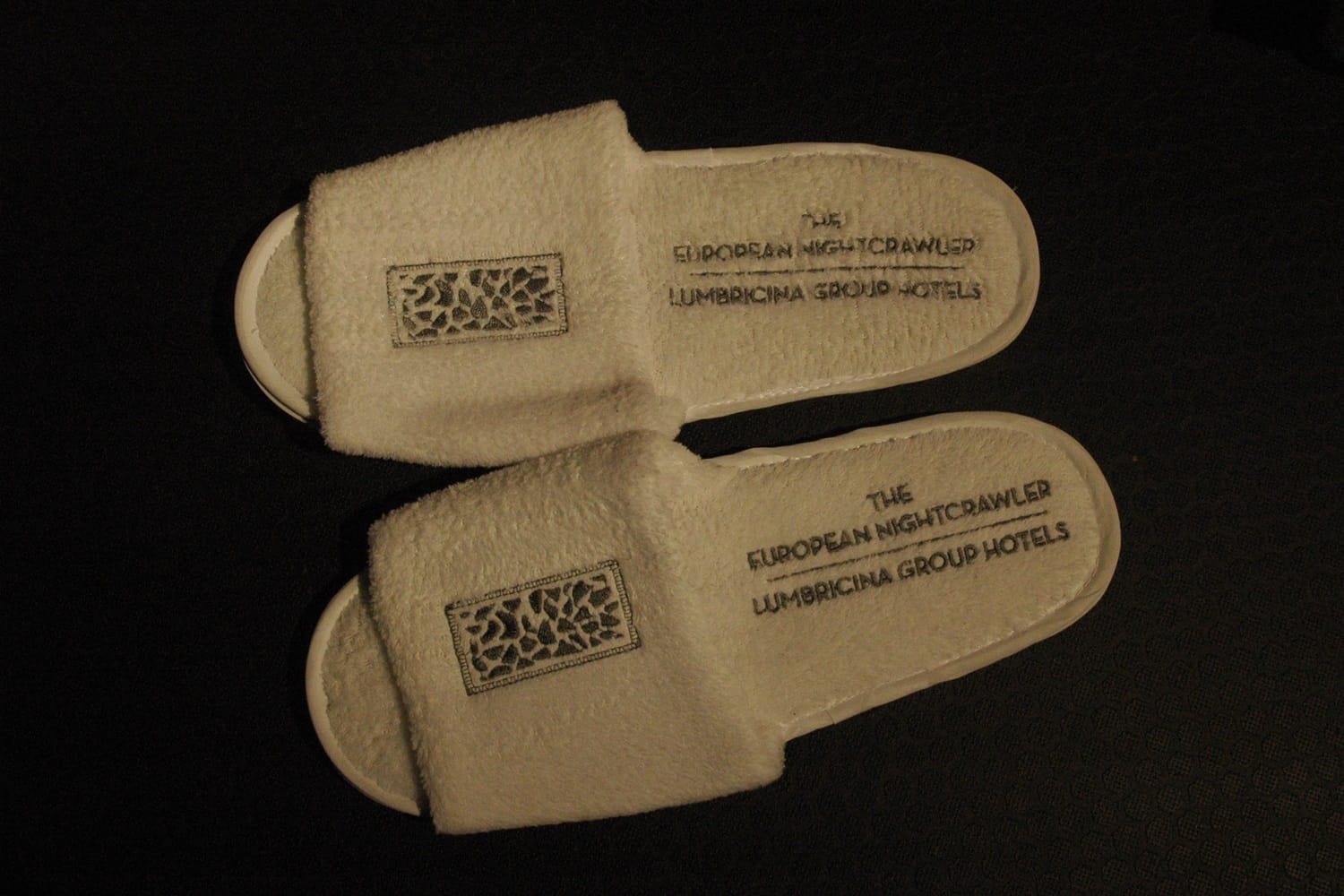What’s the best way to tell area residents about plans for a new asylum shelter nearby?
The government should tell communities directly about plans for new asylum shelters, some activists and politicians say.
Their exhibition, Banana Accelerationism, is on at The Complex, off Capel Street, until 25 January.

In the dimly lit warehouse depot inside The Complex venue on Arran Street East, artist Laura Ní Fhlaibhín stood over a black refrigerator.
It came from a hotel, the artist said. “The gas paraphernalia to power it was all taken out, and all of the wiring was removed.”
Lying with its darkened glassy door facing up to the ceiling, she opened it to show a large piece of torn cardboard and fresh compost.
Banana peels, apple cores, the leftovers of a few oranges and soil. In among the decomposing fruits, there was motion. Two reddish-pink worms were wriggling about in one corner.
“It’s operating like a nice safe comfortable hotel room for them,” she said.
Fixed to both sides of the hacked fridge were black plastic pipes, which went around the room, connected to more fridges containing more worms and compost.
The pipes, she explained, act as tunnels between each of the “hotels” for her invertebrate guests.
Covering parts of the intricate piping system were platforms on which somebody had set out folded white towels and pairs of slippers, branded with the names of fictional hotels “The Red Wriggler” and “The European Nightcrawler”, both owned by the Lumbricina Group Hotels.

Ní Fhlaibhín’s installations form part of Banana Accelerationism, a collaboration with artist Sean Lynch as part of The Complex’s inaugural exhibition in its depot, which runs until 25 Jaunary, says Mark O’Gorman, the show’s curator. “Usually this would be in the gallery space. It wouldn’t stretch to the depot.”
A multimedia event, with installations, historic items that they found nearby, worms, bananas, projections and documentary shorts, the duo explore the history of the warehouse, the heritage of the inner-city, and how these are exploited and co-opted by excessive development and consumerism.
It’s a glimpse into this part of Dublin as it has existed through time, Lynch says. “The show is a moment in time like everything else that came before on the site, and like those, it sings for a little period.”
Steam billows gently about the room, rising from drainage grates, on top of which sit various bananas, cast in bronze by Ní Fhlaibhín.
In one corner of the darkened warehouse space, she has placed glasses, covered by a thin layer of plastic, tautly stretched, and collecting condensation.
Inside the glasses is the golden glow of a liquid with floating grey organic matter. Banana DNA, she says.
“Apparently it’s toxic to drink,” says a man acting as security as he sits on a chair by the wall, in the shadows.

The title of the exhibition and the recurring use of bananas stems from the history behind the Arran Street East warehouse.
Before The Complex was an arts venue, it was a banana wholesale market, says Ní Fhlaibhín. “Dublin Digital Radio now operate out of one of the ripening fridges and I was intrigued by that aspect to this thing.”
Lynch and Ní Fhlaibhín were introduced to the building’s heritage by Mark O’Gorman.
“I would’ve developed a historical context for the area,” says O’Gorman. “Some of it was fact and some of it was hearsay.”
The pair became fascinated by the banana, how it emits ethylene gas that speeds up the ripening process of other fruits, and how its own ripening is artificially induced for mass distribution, Lynch says.
“We started talking about bananas, and the use of technology and industry to change them so they could be distributed.”
Banana Accelerationism is a conversation between moments in time, centuries apart, that collide, merge and co-exist.
Echoing throughout the depot is the voice of Edmond O’Donovan, the director of excavations for Courtney Deery Heritage Consultancy.
On a screen, O’Donovan explains his findings from a burial site, discovered behind the warehouse, where St Mary’s Abbey once stood until it was demolished in the 16th century.
In one segment, O’Donovan stands over the skeletal remains of an individual. He clutches the skull, motioning to the teeth.
“This is a fairly robust jaw,” he says, before commenting on the teeth and how they were worn down by using stone to grind the meal for their bread.
For 13 minutes, O’Donovan details the story behind the abbey and the hundreds of Viking skeletal remains that were unearthed between Arran Street East and Capel Street.
These findings were made on land slated for redevelopment as a hotel by the Beannchor Group, Lynch says. “They also found the largest haul of medieval tiles in Ireland.”
The discovery, made in July 2023, is represented through film and a sculpture, with Lynch replicating one such tile that was unearthed during the excavation process.
It’s a lion, Lynch says. “And the monks in the abbey would never have seen a lion. They would only have read about it in the Bible.”
For Ní Fhlaibhín, the excavation of St Mary’s Abbey inspired the worms, she says. “It came from building a friendship with those archaeologists and in a very literal way, thinking about digging in soil.”
Earthworms are kind of guardians of the soil, she says. “They’re really significant in protecting the soil’s health and its ecosystem by aerating the soil.”
They recharge the soil, she says. “So I guess with the hotel, my thinking was that they are playfully taking over the ownership of it, taking its apparatuses, its fridges and bringing it into their own earthworm world.”
The ultimate aim with the worms and their hotels is to create something optimistic before the end of the show, she says. “The hope is that there’ll be a compost produced in those fridges by the end of this, because that’s what worms do.”